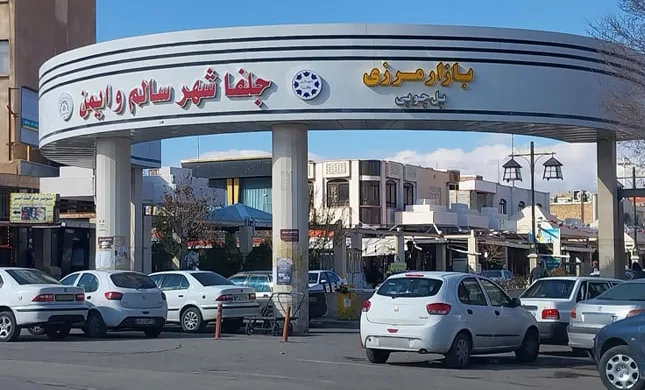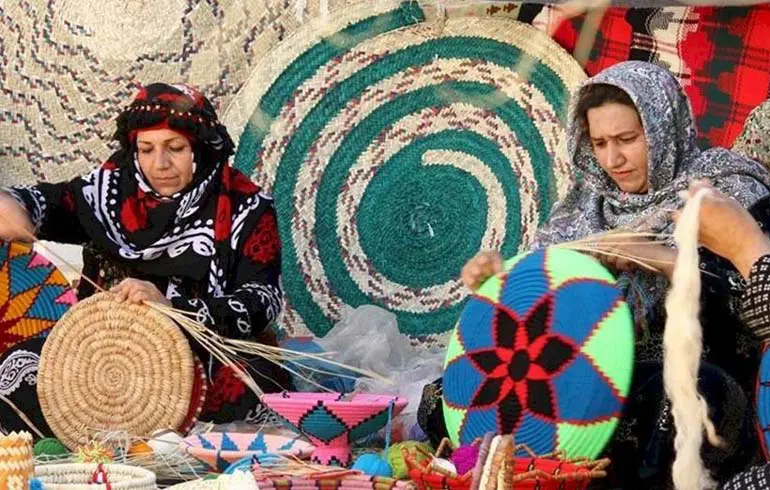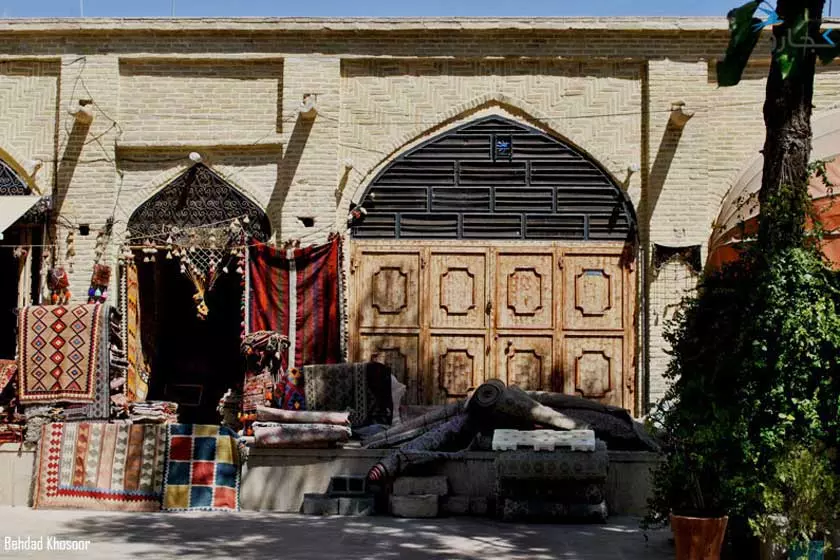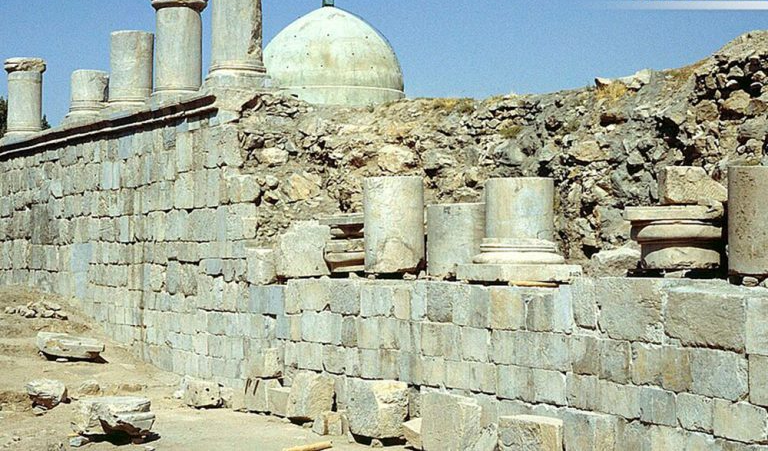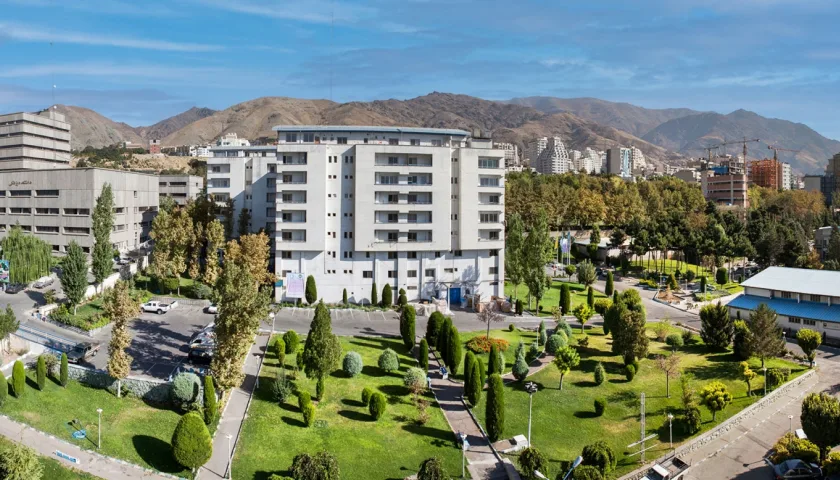Comprehensive Guide to Traveling to Tabas in Fall | Largest County in the Middle East
Some people believe that with the arrival of autumn, the season of travel begins, unaware that the best time to visit some of the country’s very attractive cities is the first two months of autumn. If you are a fan of exploring new cities and tired of repetitive trips to the north and south, plan to visit Tabas in October and November this year. Where is Tabas? We say this is the city of the unknown. A place that, despite its many attractions, is still not as well-known as it should be and is not chosen for travel. We are here to guide you in planning an autumn trip to Tabas in this article from GULF CITY PEDIA.
If you want to see the largest county in the Middle East, you have to head to Tabas. This county is part of South Khorasan province and, despite its dry and desert climate, with the famous Kal Jeni, the picturesque village of Azmighan, the Golestan Garden, the Halvan Desert, the Kal Namak, and other attractions, gives life to the tourist attractions of Tabas for travel in late summer and the first two months of autumn!
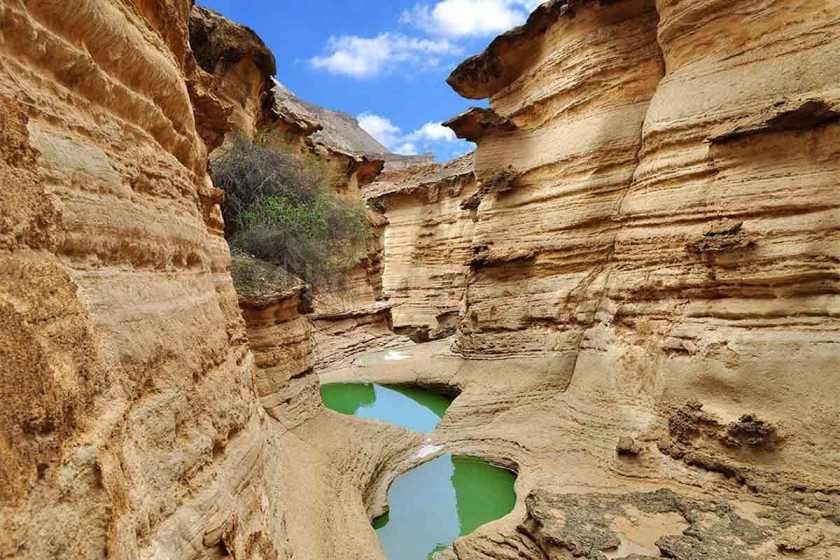
When is the best time to travel to Tabas?
It is true that Tabas is a desert city and mostly hot, but the heat cannot stop you from visiting these indescribable natural beauties. Spring and autumn are suitable seasons for a trip to Tabas. Tourists usually choose the first two months of autumn for a trip to the bride of Iran’s deserts. Tabas in autumn is moderate and pleasant, allowing for travel and exploration. However, if you crave a refreshing swim in the summer, it’s not a bad idea to head to Tabas to visit the Shah Abbasi Dam and the Jinn Valley in this season. Of course, Tabas in spring also has a bit of its own charm. So, the Nowruz holidays can also be a suitable choice for a trip to Tabas.
How to get to Tabas?
Tabas is 12 hours away from Tehran. So, you have a long journey ahead for this trip. For a trip to Tabas, you can use a personal car, plane, bus, train, or buy domestic tour packages. If you have a personal car, the best and shortest route is to head from Tehran towards Semnan. After reaching Semnan, continue the route towards Tabas. It’s not a bad idea to stop by Shahmirzad Semnan on the way and enjoy the pleasant climate of this desert resort.
If your time is limited or you don’t want to get stuck in these long roads, the best option is to buy a plane ticket. The direct Tehran to Tabas flight summarizes this 12-hour long journey for you in just 1 hour. If you are alone and want to enjoy the natural scenery and tourist attractions of South Khorasan province and the Golestan Garden of Tabas alongside a happy group, the best option is to buy a tourist tour. Buses and trains are also two other ways to travel to Tabas that you can choose according to your preference.
In the autumn trip to Tabas, where should we visit?
Kal Jeni Tabas is the most famous tourist attraction in the city. One of the tourist attractions of Tabas is the famous Kal Jeni. This valley, located in the middle of the hot desert of Tabas, is known for its unique and water-rich valley with its peculiar erosion shapes on the walls and numerous tunnels among the locals, making it a mysterious and eerie area. People from the surrounding villages used to tell many stories about this valley, attributing supernatural and terrifying qualities to it. All these stories gave the valley the name “Jinn.” Entering Kal, you will be amazed by the numerous tunnels, cavities, house-like cavities, unique wall formations, and numerous waterfalls. Along the way, there are many ponds with depths ranging from half a meter to 2 meters, making them perfect for refreshing in the summer.
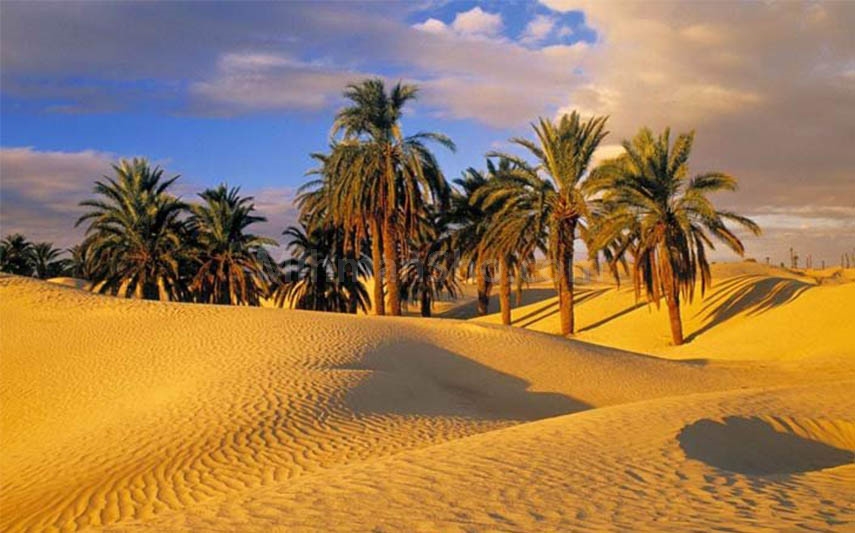
What makes you more amazed and fascinated in this valley is that with a little attention to the tunnels and cavities created in Kal, you realize that all these excavations are human-made and that this seemingly mystical valley had a vibrant life in a distant past. This valley is a complex of a main canal and subsidiary canals that start from the palm grove and reach the village of Azmighan in Tabas. Numerous aqueducts along this route have led to the growth of many plants, making the valley lush and enchantingly fresh in spring and summer.
The next attraction you must see on your trip to Tabas is the Golestan Garden. Most travelers to Tabas imagine that they are going to enter a desert area! Somewhere that as far as the eye can see, there are deserts and salt flats, and there is no sign of a garden or trees; however, it doesn’t take long for their perceptions of this city to change, especially when they see Golestan Garden in Tabas!
Golestan Garden in Tabas, which is one of the main attractions of the city, hosts visitors to Tabas with its pleasant atmosphere and delightful climate throughout the year due to its location on the water currents of Tabas springs. This historical garden is the result of Mir Hossein Khan’s efforts in the Afsharid-Zandieh period.
The springs flowing under the garden enter the garden from the end of the complex and, after irrigating the trees and moving through the channels and fountains, exit Golestan Garden to supply water to the city. Designed in a checkerboard pattern by its first architect, this garden is one of the most important gardens in Iran with over ten types of trees and various ornamental flowers. It is recommended for all Iranians to see this garden at least once. This garden is the second square-shaped garden in the world, similar to the Taj Mahal in India, and streets of the garden connect its length and width. Moreover, the juxtaposition of cold-climate trees like plane trees and tropical trees like palms not only amazes everyone but also adds to the grandeur, majesty, and uniqueness of Golestan Garden in Tabas.
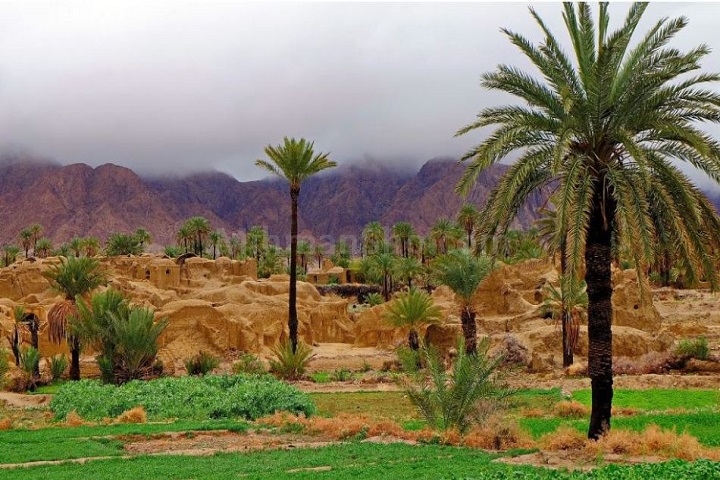
Shah Abbasi Dam or Shah Abbasi Delay Dam
In your trip to Tabas, it is essential to include a visit to Shah Abbasi Dam in your itinerary. This dam is one of the most fascinating historical attractions in Tabas, often referred to as the thinnest historical dam in the world. Experts in this field believe that Shah Abbasi Dam, both a weir and a delay dam, is a highly creative work, cleverly designed and strategically built. The foresight in its construction and architecture has allowed it to bear the titles of the largest, oldest, and tallest arched dam in the world for over 500 years.
Shah Abbasi Dam also holds another peculiar title due to the narrow width of its crown, earning the recognition as the thinnest dam in the world. It still holds various records among historical dams worldwide. This remarkable attraction is located near a village called Khur in Tabas.
Azmighan Tabas
Tabas has several charming villages, with one of the most famous being Azmighan. This village is renowned for its perennial rivers, and its residents have ingeniously cultivated fields next to palm groves, where they cultivate rice. This intriguing contrast makes Azmighan’s palm groves and rice paddies a popular destination for many tourists every year. Another tourist attraction in Tabas in Azmighan is an area called Takht-e Aroos, where all the local rivers ultimately converge. The white stone platform emerging from the waters has led to naming this area Takht-e Aroos, meaning the Bride’s Throne.
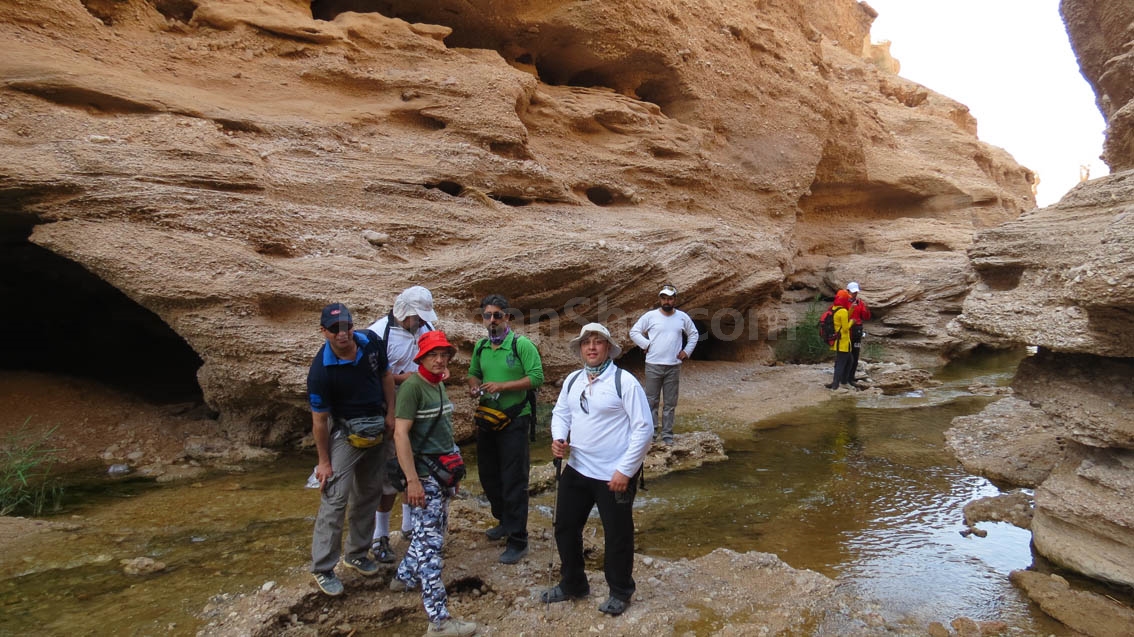
Hadarbaf Tower
Walking among the vast and beautiful palm groves of Tabas is a recurring delight for many tourists choosing this desert city for their travels. Considering the significance of these palm groves, tall towers called “Hadarbaf” were constructed in the past to protect the palm trees from thieves and wild animals. “Hadar” in Yazdi dialect means “care,” and remnants of these domed towers can still be found in many of Tabas’ palm groves.
Khan Tabas Caravanserai
On the old road from Tabas to Yazd, after passing Kalmorud Caravanserai, the village of Rabat Khan hosts the beautiful caravanserai called Khan. This four-sided and aesthetically pleasing mansion is considered one of the most picturesque historical structures in Tabas, dating back to the Safavid period. Undoubtedly, observing the windcatchers and the Shah Neshin dome closely provides architecture and history enthusiasts with a unique memory of their trip to Tabas.
Esmaeiliyan Castle
Speaking of care and protection, it’s worth mentioning the Esmaeiliyan Castle. This castle is situated on a mountain called “Bagh-e Salimeh” and in the vicinity of the village of Kharavan. With four large water reservoirs, this castle was used in many instances for collecting water for various uses. The architecture of this historical building has stood the test of time so well that one of the reservoirs remains very well-preserved after several centuries, offering a different perspective on a trip to Tabas.
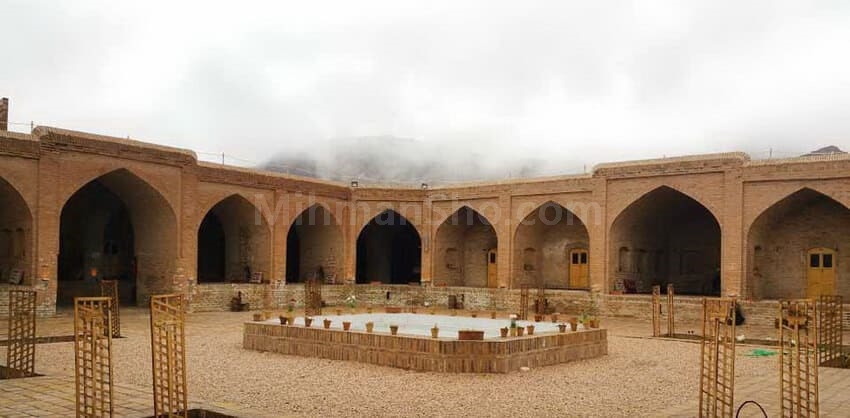
Tabas Castle
During the rule of the Ismailians and even before that, numerous small and large forts were built in various parts of Tabas. One of the most famous ones is known as “Tabas Castle.” This robust fortress, with its unique design indicating its construction in pre-Islamic times, is built on a gently sloping mountain range and has a much larger expanse compared to similar forts in the region.
Arg-e Tabas
Arg-e Tabas is another wonder of the bride of the Iranian desert cities, with a history dating back a thousand years, and even after the devastating earthquake that occurred years ago, it still stands resilient. Although the earthquake in 1978 caused irreparable damage, including the loss of some key parts of Arg-e Tabas, it has remained standing. This historical structure, also known as “Arg-e Kohan” and “Kohan Dezh” in some historical texts, is located on Vaez Tabasi Street and welcomes history enthusiasts from various cities of Iran every day.
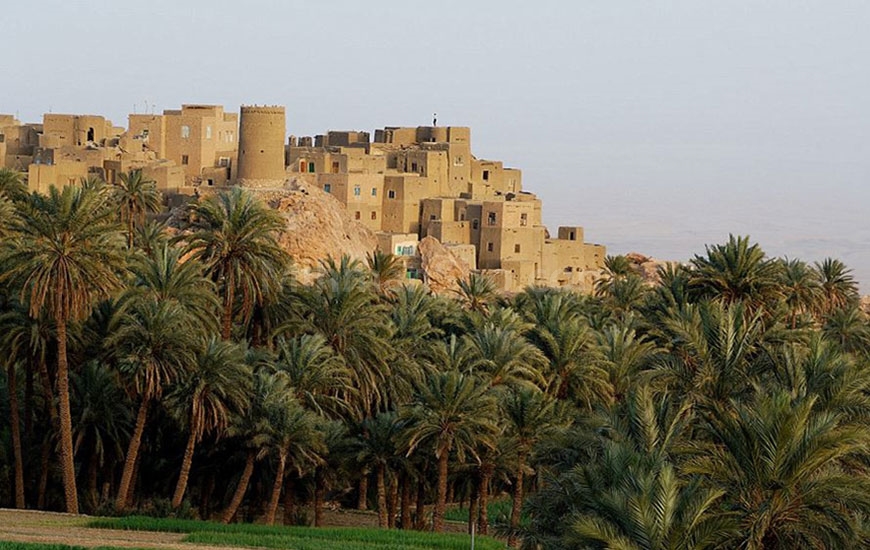
Tabas Salt River
Another notable attraction in Tabas is its salt river, also known as “Kall-e Tabas,” which is a rare phenomenon. Situated 20 kilometers northwest of Tabas and 8 kilometers from the village of Mohammadabad, the salt river presents a unique view of Tabas’ nature.
In the Tabas Salt River, you’ll find egg-shaped salt formations resembling bullets, creating a sight you will never forget. Interestingly, before the use of iodized salt, the salt from Kall-e Tabas was found on the tables of the people of this city. Considering the desert nature of this region, it is recommended to choose autumn or winter for visiting Kall-e Tabas.
Kall Sardar Valley
If you want to visit one of the most famous attractions in Tabas, be sure to stop by “Kall Sardar Valley.” This valley is located in a basin of the same name and has the unique characteristic of being hidden from distant views.
Imagine walking in the Sardar Valley plain and suddenly, after traversing a smooth path, you find yourself in front of a breathtaking valley with endless beauty! Although this path is not very long, during the hike, you can observe several historical dams with a history of 600 years and both cold and hot water springs.
Sanou Forest Tabas
If you think that finding a forest in the desert environment and warm climate of Tabas is impossible, you are mistaken! Sanou Forest is located 24 kilometers away from this city and its mountainous areas. With 800 different plant species, it is considered one of the most popular tourist attractions in Tabas.
In this region, due to water scarcity, there is no sign of lush and colorful plants. However, trees such as walnut, tamarisk, and wild spinach prevent the intrusion of sandstorms.
Book Accommodation in Tabas
Now that you’ve traveled the long distance from Tehran to Tabas, it’s a good idea to spend a couple of days in this beautiful city. There’s no need to worry about accommodation in Tabas. The city has several hotels and guesthouses to accommodate travelers.

